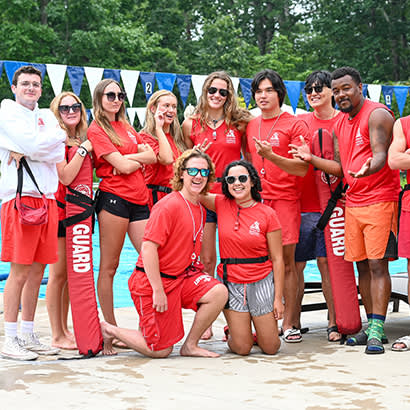
For an enhanced digital experience, read this story in the ezine.
The City of Annapolis, Maryland, had a group of mostly nonresidents demand access to five of its six swim lanes at its only pool for eight weeks of its 12-week operation, Monday through Thursday from 5 p.m. to 7:45 p.m., as they had done in years past. The request was counter to advancing equity in our community and provided an opportunity for our park and recreation department to focus on equity and public access.
We are a seven-square-mile community of only 40,000 people with more than 17 miles of shoreline. Our only pool is outdoors. We know that drowning is still one of the top three causes of unintentional injury death for people younger than 29. Additionally, swimming pool drowning rates among Black individuals between the ages of 5 and 19 is 5.5 times higher than their white counterparts, and 10 times higher between the ages of 11 and 12. These statistics emphasize the need for water safety and learn-to-swim opportunities for all in the community. This swim team wanted 80 percent of the evening hours for only themselves. The swim team also had very little diversity, despite their claims.
The Heat Turns Up
The swim team realized the department was not going to fulfill their request as presented and would instead look for a compromise. The department had offered several other options, including all lanes in the morning hours, partial lanes in the evening and a hybrid version of the two. However, the swim team insisted on their original request. The team showed up at a council meeting with signs, children and plenty of testimony. After more than 10 speakers, they even did their team chant in the chamber.
On the opposite side, some residents, a board of recreation and parks member, and a pool lifeguard all testified to request that the department give the greater community opportunities to enjoy this amenity in the evening when most working parents get off of work. Pool staff asked for support as they often are yelled at, cursed at and argued with when they have to clear the pool of the public for the swim team.
Facebook chatter was turning up. As I was the new director of only a month, many people had things to say. An Alderman, whose son swims on the team, introduced a resolution that demanded we give the swim team access to the pool. His intent was that we give them what they requested, but there was a fluke in the way the resolution was written that simply requested access. This passed council in a majority vote with many Aldermen noting the fluke and understanding the department did desire to support the swim team in some modified way. It’s also important to note that technically a resolution cannot force the department to act.
Support for Equity
Fortunately, department staff, the community, the mayor and the city manager fully supported public access to the newly built amenity. I presented and testified for more than an hour about the pool and how important public access was. Staff were excited that they finally had support on all levels and appreciated the willingness to take on such a tough problem. The department knew once the decision was made, it would be a platform for future years — one that could potentially put staff in harm’s way during the season.
The Plan
The swim team was sharing the opinion everywhere possible that the department was trying to get rid of the team that had been around for years. Meanwhile, the department was sharing the various options that had been presented that allowed both the swim team and the community to have equitable access to the pool. The department also was monitoring social media chatter regarding this topic. One community member stood out. I called that community member and shared the department’s side of the story prior to the community member’s meeting with the team to discuss her position. During our conversation, the community member agreed that having three lanes for the public and three lanes for the swim team was fair. Further, the decision that the pool would close to the public 30 minutes early and stay open an hour longer for only the swim team was more than fair. Unbeknownst to anyone, the meeting the community member had with the swim team turned into a negotiation that ended in the above compromise. This meant we would be able to have open swim, learn-to-swim classes and other programs — a win all the way around.
Moral of the Story
The public and our communities need us to be their voices, no matter how tough it may be. Sometimes standing on your values and what you know to be right is tough, but that is what we are hired to do. As my mother always said, “If you stand for nothing, you fall for everything.” Courage is standing up for what you know is right.
Roslyn Johnson, CPRP, is Director of Annapolis Recreation and Parks.

